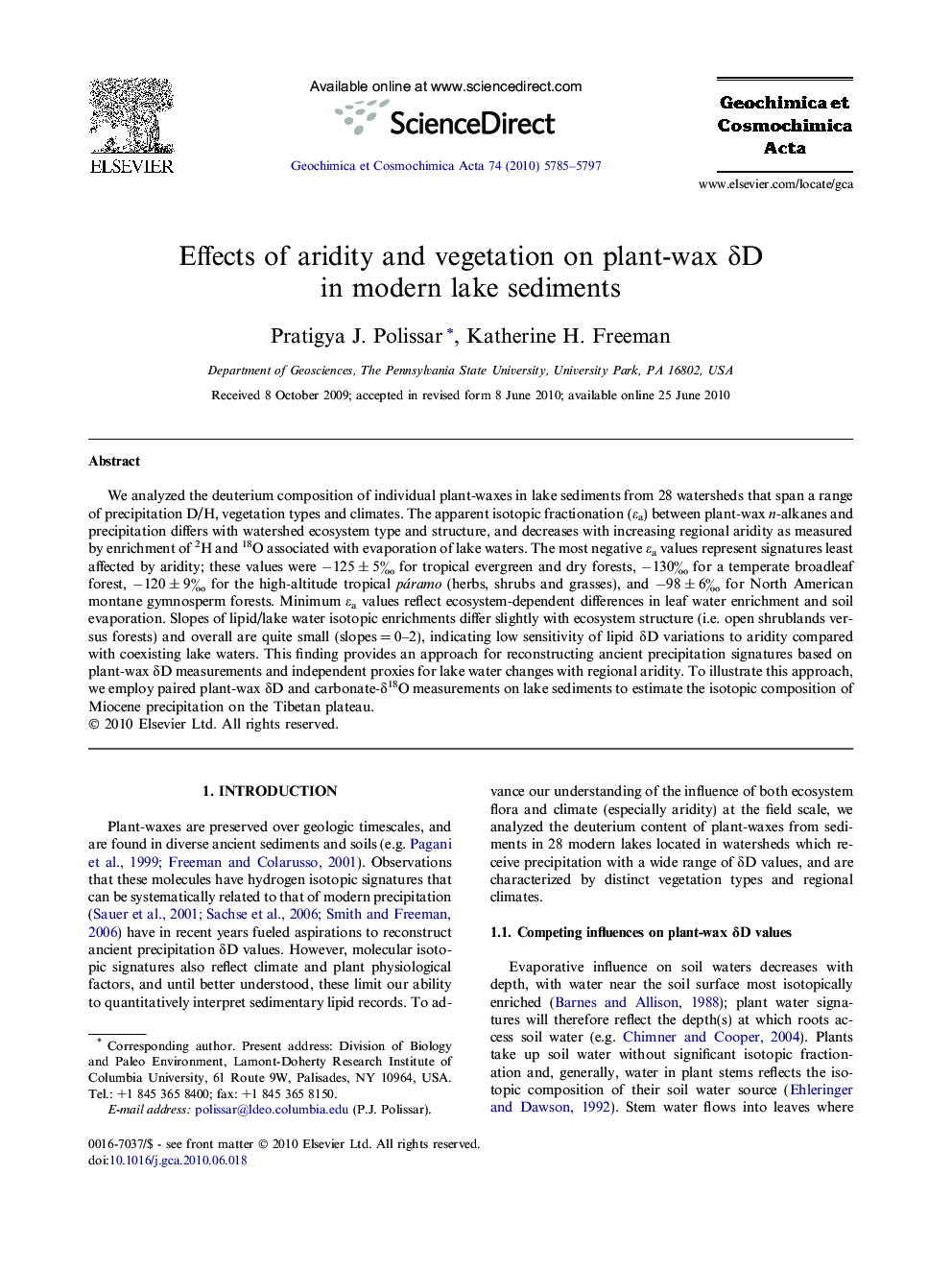| کد مقاله | کد نشریه | سال انتشار | مقاله انگلیسی | نسخه تمام متن |
|---|---|---|---|---|
| 4703801 | 1352881 | 2010 | 13 صفحه PDF | دانلود رایگان |

We analyzed the deuterium composition of individual plant-waxes in lake sediments from 28 watersheds that span a range of precipitation D/H, vegetation types and climates. The apparent isotopic fractionation (εa) between plant-wax n-alkanes and precipitation differs with watershed ecosystem type and structure, and decreases with increasing regional aridity as measured by enrichment of 2H and 18O associated with evaporation of lake waters. The most negative εa values represent signatures least affected by aridity; these values were −125 ± 5‰ for tropical evergreen and dry forests, −130‰ for a temperate broadleaf forest, −120 ± 9‰ for the high-altitude tropical páramo (herbs, shrubs and grasses), and −98 ± 6‰ for North American montane gymnosperm forests. Minimum εa values reflect ecosystem-dependent differences in leaf water enrichment and soil evaporation. Slopes of lipid/lake water isotopic enrichments differ slightly with ecosystem structure (i.e. open shrublands versus forests) and overall are quite small (slopes = 0–2), indicating low sensitivity of lipid δD variations to aridity compared with coexisting lake waters. This finding provides an approach for reconstructing ancient precipitation signatures based on plant-wax δD measurements and independent proxies for lake water changes with regional aridity. To illustrate this approach, we employ paired plant-wax δD and carbonate-δ18O measurements on lake sediments to estimate the isotopic composition of Miocene precipitation on the Tibetan plateau.
Journal: Geochimica et Cosmochimica Acta - Volume 74, Issue 20, 15 October 2010, Pages 5785–5797